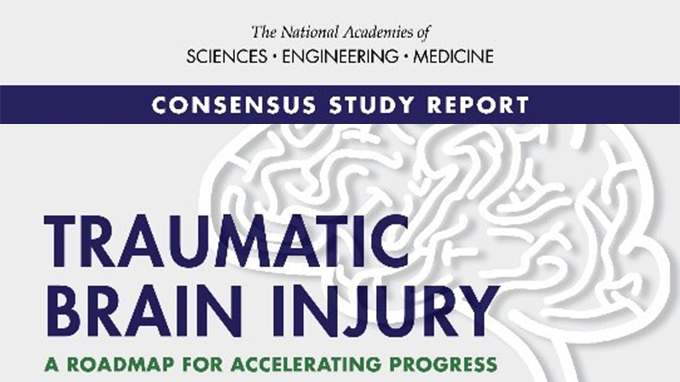Research In Action
Research In Action
Breadcrumb

Despite ongoing efforts to increase awareness of the prevalence and consequences of traumatic brain injury (TBI), many gaps remain in the understanding of the most effective preventive, acute, rehabilitative, and long-term care of patients who have suffered from TBI.
As part of an effort to address this knowledge gap, I recently served on the National Academies of Sciences, Engineering and Medicine (NASEM)’s Committee on Accelerating Progress in Traumatic Brain Injury Research and Care, which recently released a new report that explores the landscape of TBI research and care and proposes a roadmap to help accelerate advances in the field. The roadmap focuses on various topics such as:
- Key elements of an effective learning health system (integrating clinical experience and research evidence) for diagnosing and treating TBI
- Developing more precise means to classify TBI
- How to address health insurance and other barriers to access quality TBI care
- Improving the quality and range of TBI epidemiology studies and clinical trials
Implications for Pediatric Care
Several pediatric-specific factors should be considered in the management of TBI to optimize outcomes. Early and accurate identification is key, and can reduce disparities in outcomes between girls and boys. The use of validated tools that can be administered where the injuries occur and where the patients first present for care plays an important role in early recognition and diagnosis. The visio-vestibular exam is an example of such a tool that may be useful for both athletic trainers on the field, as well as clinicians in an emergency department or primary care. Accounting for developmental differences (including for those in early childhood and elementary school), as well as implementing active support and management when considering prevention, diagnosis, and recovery management, can also optimize outcomes.
The widespread implementation of of standardized return to play protocols (which are mandated by state laws in each U.S. state) in youth interscholastic sports are examples of best practice in terms of a comprehensive care process that includes early recognition and diagnosis, management, and determination of safe recovery before return to play. These practices can serve as a model of best practice that could be translated to concussions due to other mechanisms of injury, as well as concussions in other populations (such as non-athletes).
Because of the tremendous impact TBIs have on quality-adjusted life-year (QALY, a measure of both the length and quality of life) of children, it is crucial that researchers and clinicians focus on issues specific to pediatric TBI diagnosis and management, ensuring that they do not get lost in the larger conversations around TBI.
For more information on pediatric concussion diagnosis and management, visit the Minds Matter website.




